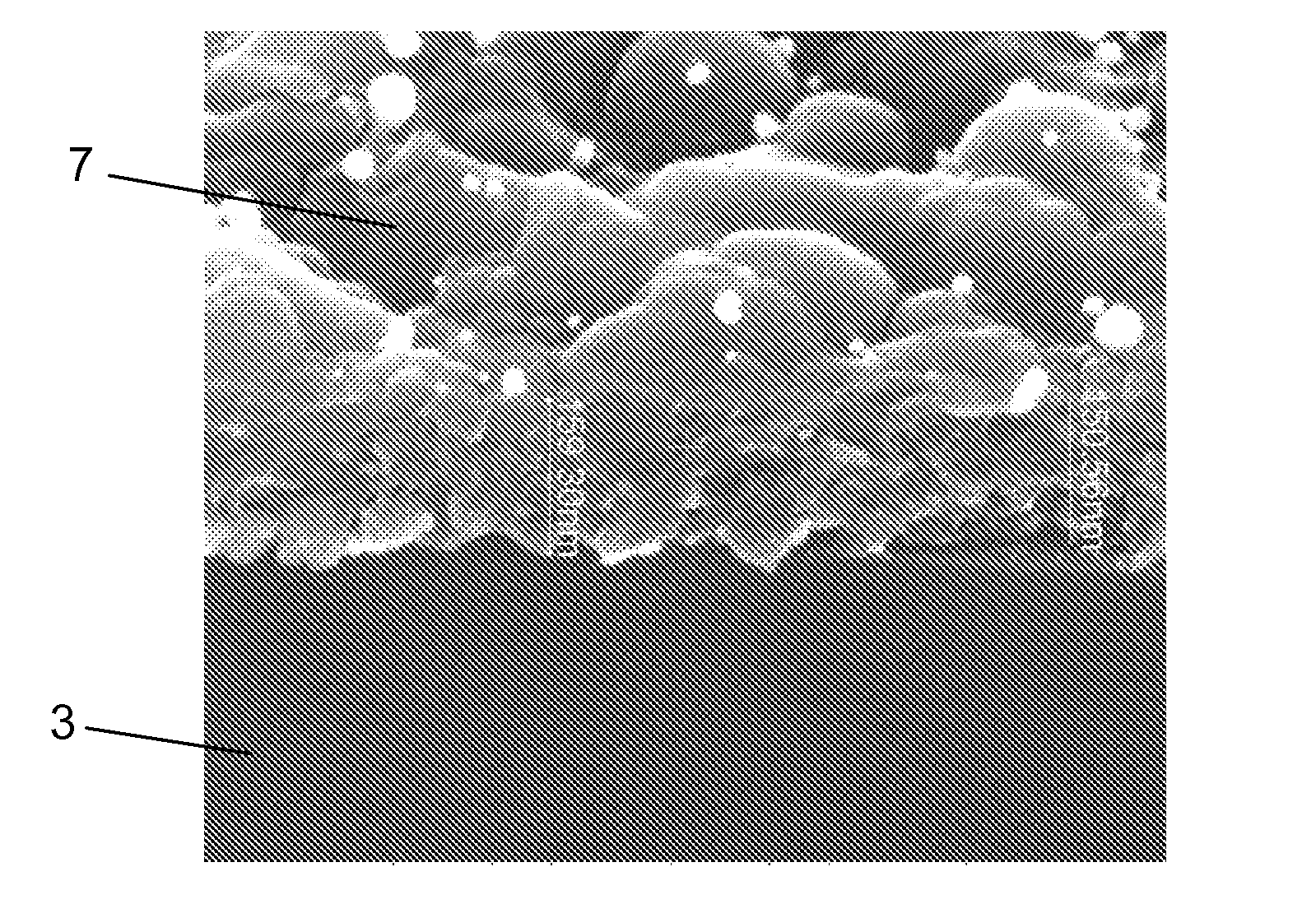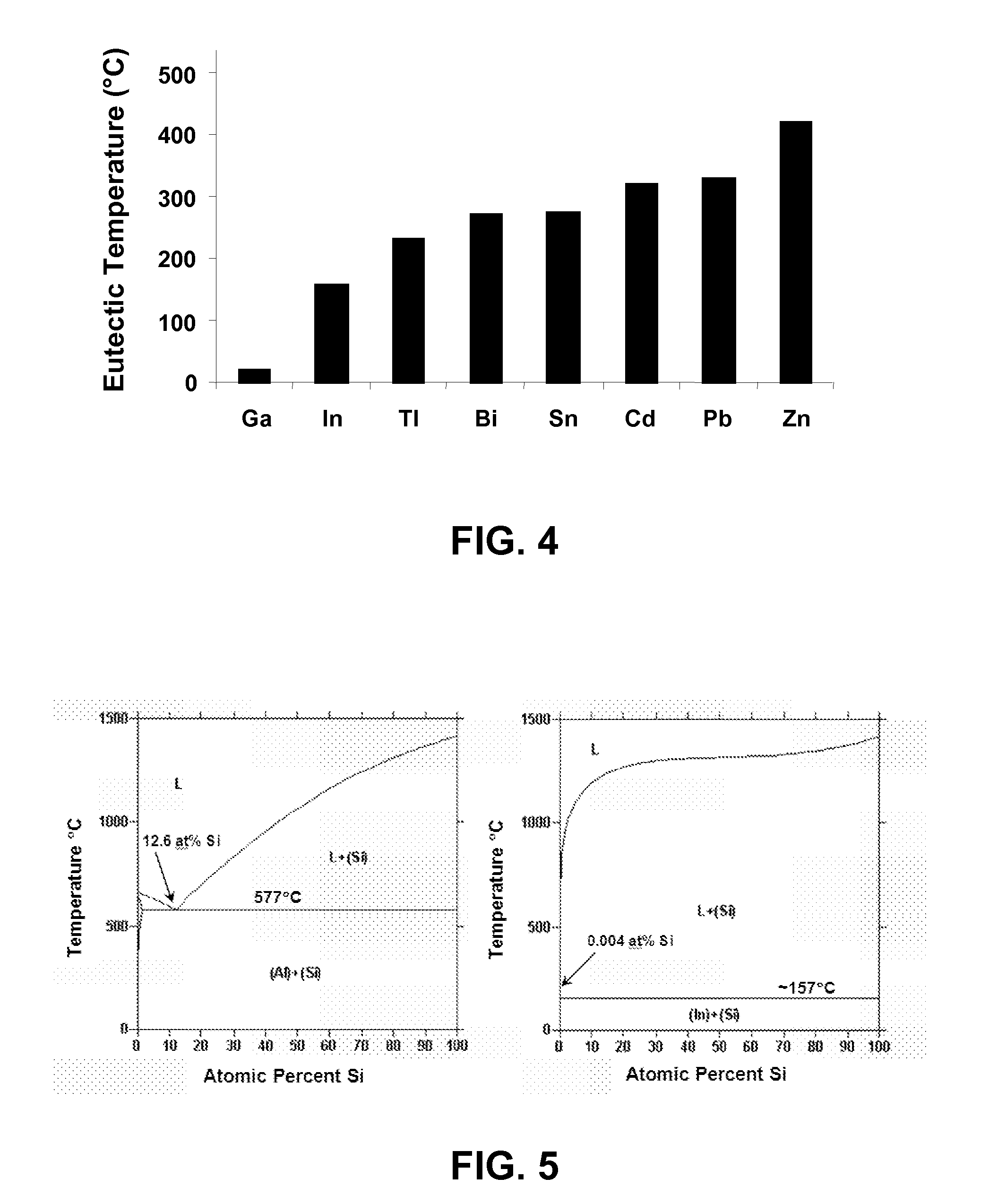Low-temperature formation of layers of polycrystalline semiconductor material
a polycrystalline semiconductor and low temperature technology, applied in the field of polycrystalline semiconductor materials, can solve the problems of time-consuming and consequently expensive methods described by do young kim et al., and achieve the effect of increasing the polycrystallinity of the semiconductor material and increasing the grain siz
- Summary
- Abstract
- Description
- Claims
- Application Information
AI Technical Summary
Benefits of technology
Problems solved by technology
Method used
Image
Examples
example
[0101]According to an example, Indium (In) may be used as a catalyst material. In has a melt temperature of 160° C. and is thus in liquid form at a temperature of 300° C. which is used in this experiment for forming the layer 6 of polycrystalline silicon.
[0102]The formation of a polycrystalline silicon layer was performed using VLS growth in a CVD chamber with a direct RF plasma source as described above by using the following recipe:[0103]1) Deposit catalyst particles 4 at a density in the order of 108 à 109 particles / cm2, the particles having a diameter of between 1 nm and 200 nm,[0104]2) heat up for 2 minutes, 300° C.,[0105]3) H2-preclean, 200 sccm, P=1000 mTorr, RF=100 W, 1 minute[0106]4) Pump down to 10 mTorr,[0107]5) Plasma deposition[0108]a. SiH4=20 sccm, H2=10 sccm, Ar=10 sccm (2:1:1)[0109]b. P=500 mtorr[0110]c. RF=20 W[0111]d. T=300° C.[0112]e. Time=10 min[0113]6) Pump down to 10 mTorr
[0114]For experiments, the following settings of the CVD chamber have been used: 200 mm wa...
PUM
| Property | Measurement | Unit |
|---|---|---|
| temperature | aaaaa | aaaaa |
| temperature | aaaaa | aaaaa |
| temperature | aaaaa | aaaaa |
Abstract
Description
Claims
Application Information
 Login to View More
Login to View More - R&D
- Intellectual Property
- Life Sciences
- Materials
- Tech Scout
- Unparalleled Data Quality
- Higher Quality Content
- 60% Fewer Hallucinations
Browse by: Latest US Patents, China's latest patents, Technical Efficacy Thesaurus, Application Domain, Technology Topic, Popular Technical Reports.
© 2025 PatSnap. All rights reserved.Legal|Privacy policy|Modern Slavery Act Transparency Statement|Sitemap|About US| Contact US: help@patsnap.com



